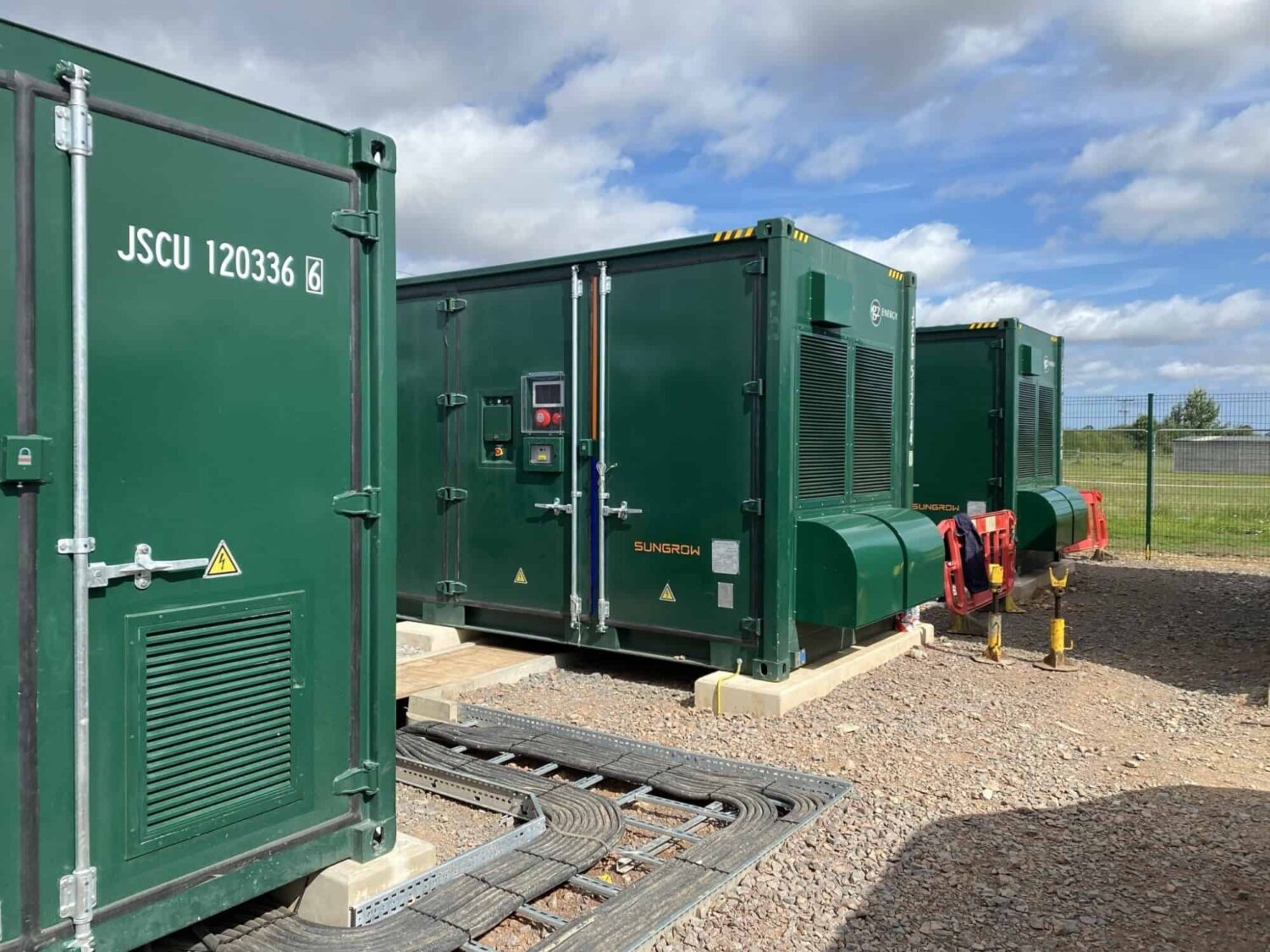
The UK must be able to store renewable electricity to avoid dependence on fossil fuels. But how exactly does it work, and who’s building it?
A few years ago, when people in Bristol’s Feeder Road district learned of plans to install 48 diesel generators near a local nursery school, they weren’t best pleased. A group called Residents Against Dirty Energy (RADE)They opposed it vigorously. But they were up against a compelling argument: without such backup power plants, the UK’s electricity grid could cease to function.
The grid must balance electricity supply and demand. Even in the days when most of the UK’s electricity came from large coal plants, some of these always had to be kept on ‘spinning reserve’ – ready to send more power down the wires as demand surged at peak times. Grid balancing has become more important with a growing percentage of electricity coming from renewable sources like solar and wind. Renewables are, by their nature, variable: the wind doesn’t always blow; the sun’s intensity isn’t always consistent. Backup supplies are therefore essential.
But that doesn’t have to mean ranks of diesel plants next to nursery schools – or anywhere else. A few years on from RADE’s campaign, a spanking new power plant is indeed being built on that very site, but this time it’s one that meets with the residents’ approval: a bank of batteries.
It’s one of two such storage plants owned by Thrive Renewables, which complement the sustainable investment company’s growing portfolio of wind, solar, hydro and geothermal power projects. Essentially, it acts just like any rechargeable battery we might use for a phone or laptop – but on a larger scale, and tied to the needs of the grid. As Thrive’s investment manager Tom Barratt says, it is ideally suited to the grid in the sense that a certain level of fine-tuning is required to maintain its frequency. “The clever bit is the way the battery is run: it can inject a short burst of power – a few minutes, a few seconds, even – to stabilise the frequency of the grid when required.” Technologically, this is a lot more sophisticated than firing up an old coal plant.
Battery plants can also help reduce the overall carbon footprint of all those electrons flowing down the wires, explains Thrive’s managing director, Matthew Clayton. “Electricity wholesale prices are set for periods of half an hour: when demand is high, the requirement for fossil fuel sources of power such as Gas is expensive. That’s when batteries can be used to reduce the cost and the carbon intensity of the energy. When demand is lower, or there is more supply coming from renewable sources, the price falls, so that’s the time to recharge the battery. Essentially this means that it charges up with low-carbon power, and then exports electricity to mitigate high-carbon generation – because price and carbon intensity tend to track each other.”
This is a win-win situation for Thrive and other battery manufacturers. At present, Thrive’s investments in storage are relatively small-scale: the Feeder Road plant has a capacity of 20MW, and can produce electricity when fully charged for 90 minutes at a stretch (so providing 30MWh of power to the grid). Its second plant, Wicken near Milton Keynes has a 5MW capacity (7.5MWh). Set against a total installed capacity of 1,300MW across the country, this may seem like small beer – especially when, according to National Grid, the UK needs 10 times that by 2030 to be on track for its net zero targets.
Grid balancing has become more important as renewable energy sources are increasing in importance.
The beauty of small-scale battery plant is their ability to be quickly rolled out. The Feeder Road plant will go online in the fall, although construction has just begun this spring. (Compare that to the decade – or longer – lead times of a nuclear plant.) Multiple battery storage projects can be used to create a single, distributed power source that offers greater resilience than single-site generators.
They also have another advantage. “Batteries are absolutely the cheapest source of flexible power” in terms of ensuring stability of grid frequency, says Clayton, “and will be the cheapest in terms of overall grid balancing”. At least until other storage options, such as pumped water, are available at scale. Because of site constraints, there can only be so many.
Like most batteries, Thrive’s depend on lithium, the sourcing of whichIt can be controversial. Clayton says that Thrive does a lot research on its suppliers to ensure they are ethically sound. He also points out the possibility of sourcing large quantities of lithium from brine water that is produced as part of the Thrive program. Thrive’s planned geothermal plant in Cornwall. “Carbon-free Cornish lithium is a really exciting prospect!”

A storage facility at Wicken near Milton Keynes is one of two operated by Thrive Renewables. Image: Thrive Renewables
Can batteries be used to power our journey to net zero? Clayton believes so. Their ability to provide vital energy storage and grid balancing services gives him confidence that the prospect of something approaching a 100 per cent renewably powered future – without a material increase in energy costs – is within reach.
“It’s just a question of whether we are bold enough to move that far, that fast”, he concludes, adding: “If the will’s there, then the technology’s there to deliver it.”
Main image: Houses in Bristol (UK). Credit: Shauking
